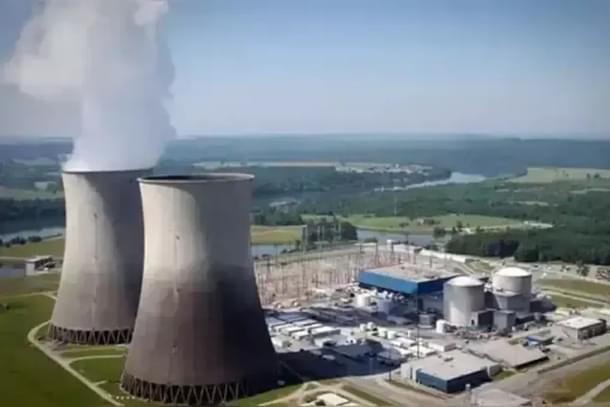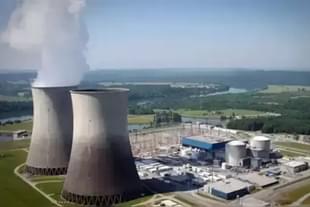Infrastructure
Gujarat: PM Modi To Unveil Two 700 MW Indigenous Reactors At Kakrapar On 22 February
Amit Mishra
Feb 19, 2024, 04:41 PM | Updated 04:54 PM IST
Save & read from anywhere!
Bookmark stories for easy access on any device or the Swarajya app.


Prime Minister Narendra Modi will dedicate to the nation two new indigenously developed reactors at Kakrapar Atomic Power Plant in Gujarat on 22 February, reported Indian Express. Kakrapar is situated about 80 km from Surat.
The two new reactors — unit 3 and unit 4 — are the first two in the series of sixteen indigenous Pressurised Heavy Water Reactors (PHWR) of 700 MW each being set up in the country.
A pressurised heavy water reactor uses natural uranium as fuel and heavy water as coolant and moderator.
While these reactors have been designed, constructed, commissioned, and operated by the Nuclear Power Corporation of India Limited (NPCIL), a public sector enterprise under the Department of Atomic Energy, the supply of equipment and execution of contracts have been taken care by Indian industries and companies, thus reflecting the true spirit of Make in India.
The Kakrapar Atomic Power Station (KAPS) has been operational since 1993, with two units generating 220 MW each. The new units 3 and 4 have been built adjacent to the existing ones.
The third unit of the Kakrapar Atomic Power Project (KAPP-3) commenced operations at full capacity on 31 August last year.
Unit 4 of the Kakrapar Atomic Power Project (KAPP-4) achieved a significant milestone by achieving criticality (start of controlled fission chain reaction) for the first time on 17 December 2023, and is expected to reach full power soon.
Once both new units are up and running, the total power production capacity of the Kakrapar plant will rise to 1,440 MW.
NPCIL currently operates 23 reactors, totaling 7,480 MW in capacity. These consist of 19 PWHR reactors, 2 Boiling Water Reactors (BWR), and 2 Pressurized Water Reactors (PWRs).
Furthermore, NPCIL is building nine more units (including KAPP-4), adding up to 7,500 MW in capacity. Additionally, 10 additional reactors, with a combined capacity of 7,000 MW, are in pre-project stages and are expected to be finished by 2031-32.
The launch of the two units at Kakrapar marks a significant milestone in the commercial evolution of the domestically developed PWHR technology. The unit capacity of PHWRs has progressed from 220 MW to 540 MW and now to 700 MW with near to full indigenous content.





